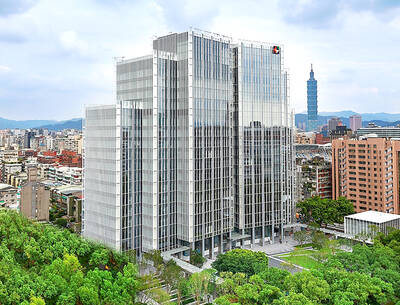Regions making up one-third of China’s economy expanded slower than the national growth rate in the first quarter, underscoring the extent of the damage caused by a worsening COVID-19 outbreak and widening lockdowns.
Six provincial-level jurisdictions — all of which experienced a rise in infections in the January-to-March period — lagged behind the national GDP growth rate of 4.8 percent, local statistics bureaus said.
That included Guangdong and Jiangsu provinces, two of the country’s biggest provincial economies, which grew 3.3 percent and 4.6 percent respectively.
In Guangdong, the technology hub of Shenzhen was last month locked down for one week, while manufacturing base Dongguan salvaged factory activity by keeping workers in so-called “closed loops,” where they lived on site.
Several cities in Jiangsu, including the key electronics hub of Suzhou near Shanghai, also tightened controls as infections rose.
The other laggards included Henan, Liaoning, Shanghai and Tianjin. The latter, a port city that recorded China’s first community spread of the Omicron variant of SARS-CoV-2 in January, expanded just 0.1 percent and had been struggling before the latest outbreak.
The first-quarter data made public so far includes 28 of China’s 31 provincial-level jurisdictions. Jilin, Xinjiang and Tibet, which contributed just 3.13 percent of national GDP, have yet to disclose results.
Jiangxi Province was the quarter’s best performer, with its economy growing 6.9 percent. The southeastern province, known for its fine porcelain, recorded retail sales growth of 8.9 percent.
Investment and industrial production in Jiangxi were also strikingly robust, up 15.6 percent and 9.5 percent respectively.
However, China’s overall growth outlook is weakening, as lockdowns in places such as Shanghai drag on and as infections start to rise in Beijing, prompting fears of strict curbs there.
Economists have slashed their growth forecasts due to the country’s strict adherence to its “zero COVID” policy.
The latest survey conduction by Bloomberg News found that GDP is expected to grow 4.9 percent this year, far short of Beijing’s target of about 5.5 percent.

GROWING CONCERN: Some senior Trump administration officials opposed the UAE expansion over fears that another TSMC project could jeopardize its US investment Taiwan Semiconductor Manufacturing Co (TSMC, 台積電) is evaluating building an advanced production facility in the United Arab Emirates (UAE) and has discussed the possibility with officials in US President Donald Trump’s administration, people familiar with the matter said, in a potentially major bet on the Middle East that would only come to fruition with Washington’s approval. The company has had multiple meetings in the past few months with US Special Envoy to the Middle East Steve Witkoff and officials from MGX, an influential investment vehicle overseen by the UAE president’s brother, the people said. The conversations are a continuation of talks that

Alchip Technologies Ltd (世芯), an application-specific integrated circuit (ASIC) designer specializing in artificial-intelligence (AI) chips, yesterday said that small-volume production of 3-nanometer (nm) chips for a key customer is on track to start by the end of this year, dismissing speculation about delays in producing advanced chips. As Alchip is transitioning from 7-nanometer and 5-nanometer process technology to 3 nanometers, investors and shareholders have been closely monitoring whether the company is navigating through such transition smoothly. “We are proceeding well in [building] this generation [of chips]. It appears to me that no revision will be required. We have achieved success in designing

UNCERTAINTY: Investors remain worried that trade negotiations with Washington could go poorly, given Trump’s inconsistency on tariffs in his second term, experts said The consumer confidence index this month fell for a ninth consecutive month to its lowest level in 13 months, as global trade uncertainties and tariff risks cloud Taiwan’s economic outlook, a survey released yesterday by National Central University found. The biggest decline came from the timing for stock investments, which plunged 11.82 points to 26.82, underscoring bleak investor confidence, it said. “Although the TAIEX reclaimed the 21,000-point mark after the US and China agreed to bury the hatchet for 90 days, investors remain worried that the situation would turn sour later,” said Dachrahn Wu (吳大任), director of the university’s Research Center for

PROJECTION: KGI Financial said that based on its foreign exchange exposure, a NT$0.1 increase in the New Taiwan dollar would negatively impact it by about NT$1.7 billion KGI Financial Holding Co (凱基金控) yesterday said its life insurance arm has increased hedging and adopted other moves to curb the impact of the local currency’s appreciation on its profitability. “It is difficult to accurately depict the hedging costs, which might vary from 7 percent to 40 percent in a single day,” KGI Life Insurance Co (凱基人壽) told an investors’ conference in Taipei. KGI Life, which underpinned 66 percent of the group’s total net income last year, has elevated hedging to 55 to 60 percent, while using a basket of currencies to manage currency volatility, the insurer said. As different